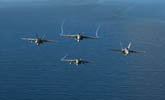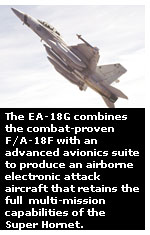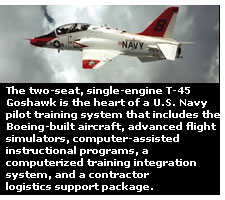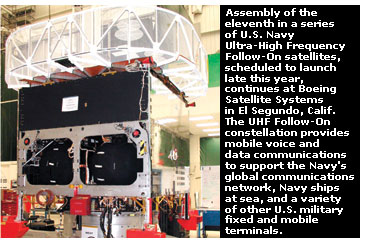|
Customers worldwide have praised the F/A-18 Super Hornet’s
superior performance and capabilities.

Performance better than plan is the program’s hallmark, said Tony
Parasida, Boeing F/A-18 vice president. The F/A- 18E/F program has
led the way in acquisition reform, operational excellence and
customer satisfaction. It has never been just a platform-focused
program. Going well beyond the “platform mentality” of the past, the
Super Hornet has always focused on systems. It has focused on
providing the war fighter with the latest in technology.
“As our customer’s requirements evolve, the Super Hornet program
seeks to remain not merely in step, but to reach forward to 2010 and
beyond to enable the U.S. Navy’s transformation,” Parasida said. “We
will accomplish this through a series of well-planned steps that
incorporate state-of-the-art systems that will keep pace with the
integrated battle space of the future.” 
| 






